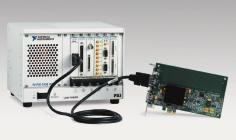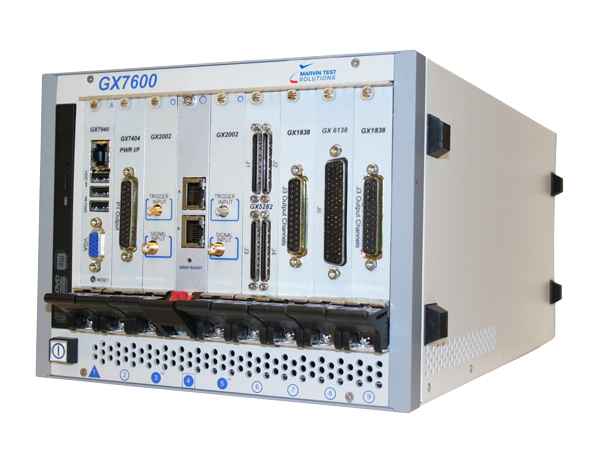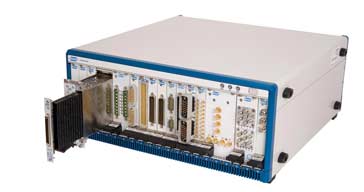Pxi Slots
PXI tutorial includes:
What is PXI?PXI standardPXI chassisPXI bus and backplanePXI controllerPXI cards & modulesPXI softwarePXI ExpressPXImc MultiComputingSet-up & build PXI system
This symbol signifies which of the PXI(e) slots the card may be plugged into. Note that some slots can have more than one use (like the last entry of the above table). For example, the a white circle inside a white diamond means the slot can be used as a Star Trigger Slot or a PXI Peripheral Slot. We can supply a PXI chassis to meet every PXI application, they range from 8 to 19 3U slots. Selected PXI chassis are available with optional low acoustic operation; suitable for office, laboratory or other environments where low audible noise is essential.
The PXI bus system enables the overall PXI technology to offer a great amount of flexibility in terms of controlling the different instrumentation cards that are available. In view of this, the PXI test instrumentation system is used in a wide variety of applications from automatic test equipment to data acquisition.
The bus is carried along the PXI backplane. This not only links the PXI bus to the individual cards, but also supplies other essentials such as power to the cards.
PXI bus basics
Although the PXI system is based around the PCI standard, this system cannot be used directly in this format. Many test equipment and data acquisition applications require accurate timing capabilities and clocks that cannot be implemented using the standard PC specifications including PCI and CompactPCI (cPCI) as well as ISA. The reason for this is that there is no reference clock. The PXI bus system builds on the basic PCI standard and implements these in the form of a dedicated system clock and triggers. These features include the following:
Pxi Slot Cover

- PXI bus reference clock
- PXI Local bus
- PXI trigger bus
- PXI star trigger bus
- Slot to slot local bus
In addition to this the specification defines a slot for the PXI system controller.
PXI bus system slot
The position of what is termed a PXI system slot is defined. The location of this is on the left end of the PCI bus segment in a basic PXI system. This arrangement is a subset of the numerous possible configurations allowed by CompactPCI where it may be anywhere on the back plane. Defining a specific location for the system slot provides a number of advantages including a simplification of integration and an increase in the degree of compatibility between PXI controllers and chassis. Also the PXI specification requires that where necessary the system controller module is able to expand to the left into what are defined as controller expansion slots. By carrying this expansion to the left this prevents the system controllers from using up valuable peripheral slots.
PXI bus reference clock
In many applications it is necessary to accurately synchronise measurements or other actions to a single clock. The PXI standard allows for this by proving a 10 MHz TTL reference clock.
The basic accuracy of the reference clock not mandated by the standard and is dependent upon the actual oscillator fitted to the chassis. Typically it will be better than 25 ppm. However the standard does specify that the track lengths from the oscillator shall be the same so that the skew between the edges reaching the different cards is less than 1 pS. This is important to ensure that triggering relative to the operation of the overall system remains constant.
PXI Local bus
A third form of PXI bus is known as the local bus. This receives its name because it is a daisy chain bus that connects one slot with the adjacent slots. The bus is 13 lines wide, and allows both digital and analogue (up to 42 volts) signals to be passed over it. In this way signals that may be required to be transferred within the chassis can be accommodated.
PXI bus triggers
There are three triggers that are defined within the PXI standard. Each type defines a different form of trigger capability, enabling the standard to offer a variety of different trigger functions dependent upon the requirements of the measurement.
- PXI Trigger bus: There are many instances where a trigger is required, and the trigger bus can be used for many of these applications. The PXI standard defines a bus consisting of eight separate trigger lines. They enable synchronisation and timing signals to be passed from one module to another where one module may act as a master passing timing or synchronisation to the others that may act as slaves.
The trigger lines allow triggers, clocks, or handshaking signals to be transferred, although it is recommended that clock signals above 20 MHz are not transferred along this bus because of the signal degradation that may be suffered. Nevertheless the trigger bus is particularly useful for most applications. - Star trigger bus: The star trigger bus adopts a different approach to that of the ordinary trigger bus. It is used for applications where a high speed trigger with low levels of delay and skew are required. To achieve this, an independent line is routed from what is termed the star trigger slot (slot 2 in the PXI chassis) to each of the other slots in a star configuration. Again the line lengths are matched to ensure that the propagation delays are matched to within 1 pS.
PXI bus power supplies
The PXI backplane carries the power for the various cards within the chassis. The power supplies must naturally be standardised to enable a variety of cards to operate satisfactorily within their allocated slots.
Most VXI chassis support a variety of different supply voltages including +5V, +3.3V as well as +12v and -12V. Supply capabilities vary, but the PXI standard version 2.1 provides for the following capabilities:
| Chassis backplane power supply capabilities Figures for Version 2.1 of the PXI standard. | ||||||
|---|---|---|---|---|---|---|
| System slot | Peripheral slot | System slot | Peripheral slot | All | All | |
| Nominal supply voltage (V) | +5 | +5 | +3.3 | +3.3 | +12 | -12 |
| Max recommended current (A) | 6 | 2 | 6 | 2 | 0.5 | 0.25 |
In order to remain within the maximum current capability of the pins of 1 amp on the backplane, the high current capacity supplies require multiple pins. For example the 5V system slot +5V supply requires six pins.
With these specifications set down, PXI technology is able to provide a resilient test and data acquisition approach that can meet the needs of a large number of applications within the electronics industry. PXI technology is widely used for general test equipment applications, as well as for test, automation and data acquisition. It is possibly for use within data acquisition systems that it has gained most of its use. For these data acquisition systems it enables a compact flexible system to be created at a reasonable cost. Accordingly PXI has become one of the leading standards for test, measurement and automation.
More Test Topics:
Data network analyzerDigital MultimeterFrequency counterOscilloscopeSignal generatorsSpectrum analyzerLCR meterDip meter, GDOLogic analyzerRF power meterRF signal generatorLogic probePAT testing & testersTime domain reflectometerVector network analyzerPXIGPIB Boundary scan / JTAG
Return to Test menu . . .
PXI tutorial includes:
What is PXI?PXI standardPXI chassisPXI bus and backplanePXI controllerPXI cards & modulesPXI softwarePXI ExpressPXImc MultiComputingSet-up & build PXI system
The PXI chassis provides the means by which the whole PXI test system is able to be held together. It provides the services which the individual cards require for the operation. It also provides everything from the mechanical card holders to the power supply and the air cooling required in such a densely packed volume.

The chassis is standardised so that PXI cards and instruments will not only be able to mechanically fit, but electrically operate to their potential within the chassis.
In order to be able to operate correctly, both cards or test instruments and the PXI chassis must conform to the standard. There are a number of salient features within the specification that enable the cards and the chassis to operate together.
PXI chassis environmental requirements
The PXI specifications states that any chassis that are manufactured should be well suited to harsh environments. Although they are not expected to meet the same requirements as military grade equipment, they should nevertheless be able to operate within many industrial environments. For example it may be necessary to operate a PXI chassis in a factory environment for data acquisition where temperatures may vary beyond those seen in a laboratory or where there is some degree of dirty. Certain levels of vibration may also be seen.
To meet these requirements the PXI chassis is based around the Eurocard packaging system used by compactPCI. As part of the system, high performance IEC connectors are used to ensure reliability over long periods of time.
To ensure that the chassis and its associated modules can operate over a sufficiently wide temperature range, the PXI specification includes specific cooling and environmental requirements. These ensure it is able to operate within a variety of industrial environments.
PXI chassis connector system
The connector system used is crucial to its operation. Connectors can be a considerable source of problems, especially when systems are used within non-laboratory environments. Intermittent contacts caused from poor connectors can be particularly time-consuming to fault find. Accordingly a high reliability connector solution was chosen.
Also to maintain compatibility, PXI uses the same pin-in-socket connector system that is found in the CompactPCI racks and systems.
The connectors used in the PXI chassis are defined by the International Electrotechnical Commission, IEC-1076 and offer a high level of performance under all conditions. The connectors pins are on a 2 mm pitch and are also impedance matched so that they provide a high level of performance within the chassis and are able to provide PXI systems more slots on a single bus segment than traditional desktop PCs systems.
Basic PXI chassis parameters
The chassis system is based around the Eurocard packaging system. This provides a number of advantages including a system that is already established. Furthermore the connectors that are used are the IEC-1076 style. The pins are on a 2 mm pitch giving a very dense connection system. In addition to this they are impedance matched to provide the required performance at high frequencies.

The PXI system supports the two sizes, namely 3U and 6U with the details outlined in the table below:
| PXI card sizes | ||
|---|---|---|
| Measurements in mm | Measurements in inches | |
| 3U | 100 by 160 | 3.94 by 6.3 |
| 6U | 233.35 by 160 | 9.19 by 6.3 |
Pxi Slot Blocker
The 3U standard has two interface connectors. One carries the signals required for the 32-bit PCI local bus and the other carries the signals for 64-bit PCI transfers and the signals for implementing various electrical features of the system. The 6U form factor defines modules that may carry up to two additional connectors for future expansion of the PXI specification. The larger card size also allows for a additional circuitry that may be required for some instruments.
In general the 3U PXI chassis and modules are more widely used. However the 3U modules can be fitted into a 6U chassis using a simple adaptor.
PXI chassis widths
PXI chassis come in a number of different sizes and the correct chassis size or type can be chosen for a given application. There is no need to buy a large chassis at extra cost if only a small number of cards are to be used.
Generally there are two sizes of chasses - a full 19 inch rack compatible size and a half rack width.
The full rack width chassis typically has 18 slots, whilst the half sized chassis has 8 slots.
Pxi Hybrid Slots
PXI chassis slots functions
Each PXI chassis has a number of slots. As mentioned above the chassis have either eight or eighteen slots. Not all the slots can be used for all cards. There are some positions reserved for particular applications.
- Slot 1: Slot 1 in the PXI chassis is reserved for the controller - this is the only position in which the controller will operate. Normally this is 4 units wide to allow for all the space required for embedded controllers, although some controllers could be smaller. Cards that link out to computers to provide the control are often only one module width and therefore in these circumstances blanking plates may be required to cover the empty space.
- Peripheral slots: These are slots that can be used for the test instruments, etc. There may be some restrictions on the types of module that can be used in terms of PXI, PXIe, etc, but these are indicated by the glyphs on the chassis as described below.
- Timing slot: On larger chassis a timing slot may be indicated. This can be used for normal peripheral modules, but it is also the one to be used if any timing or synchronising modules are to be used. This slot is on the bridge between the two sides of the chassis and it provides the shortest delay between all the modules in the rack.
As a further note, if large amounts of peer to peer streaming is required, then it is best to place the two modules that will be streaming the data on the same side of the backplane bridge, i.e. on the same side of the timing slot.
PXI chassis glyphs
In order to identify the different types of modules that can be accommodated within a PXI chassis, small identification glyphs are used with each slot to highlight what it can accommodate.
The numbers in the glyphs normally refer to the slot number, but in this instance the explanations are linked to the glyph numbers:
- 1 PXI Express system slot
- 2 PXI-1 peripheral slot, i.e. the basic PXI before PXIe was introduced.
- 3 PXI Express hybrid slot - i.e. it will accommodate both PXIe, and the basic PXI
- 4 PXI Express only peripheral slot
- 5 PXI Express system timing slot
It can be seen how the PXI chassis identification glyphs are shown and how they indicate the capabilities of each slot.
More Test Topics:
Data network analyzerDigital MultimeterFrequency counterOscilloscopeSignal generatorsSpectrum analyzerLCR meterDip meter, GDOLogic analyzerRF power meterRF signal generatorLogic probePAT testing & testersTime domain reflectometerVector network analyzerPXIGPIB Boundary scan / JTAG
Return to Test menu . . .